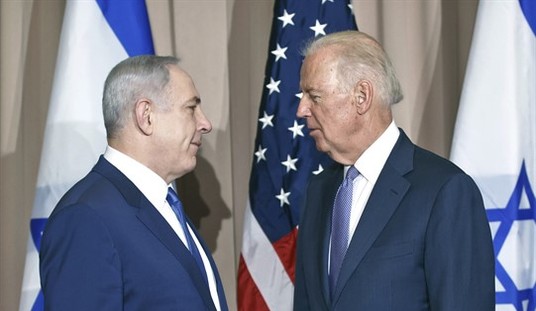One of the most anticipated motion pictures of the first half of this year is Disney’s John Carter. Slated for a March 9 release, the sci-fi/fantasy stars Friday Night Lights’ Taylor Kitsch as the title character, a Confederate soldier who is transported to Mars, where he becomes involved with the conflicts between the various nations of the planet — known as “Barsoom” to its inhabitants.
John Carter boasts an impressive cast and crew. In addition to Kitsch, the film costars Bryan Cranston, Lynn Collins, Willem Dafoe, and Dominic West. Pixar veteran Andrew Stanton directed and cowrote the script with Mark Andrews and noted author Michael Chabon. Emmy- and Oscar-winning composer Michael Giacchino wrote the score.
With so many big names involved in the production, as well as a budget soaring over $250 million, it’s no surprise that Disney aficionados and movie buffs have kept John Carter in their sights for a few years now (I can remember hearing about it as far back as the summer of 2008). With such anxious anticipation, the film has generated plenty of buzz, both positive and negative.
This movie’s circuitous road to the big screen is a fascinating one. It’s a long journey that encompasses a century and involves an array of twists and turns that befit an action epic. So buckle up and enjoy the ride.
The character of John Carter was the brainchild of author Edgar Rice Burroughs, best known as the creator of Tarzan. Burroughs’ first published work was the serialized novel Under the Moons of Mars, which he sold to All-Story Magazine for $400 in 1911, before he completed his first Tarzan novel. The novel first appeared in book form as A Princess of Mars in 1917. Burroughs expanded the saga of John Carter into a series of eleven books, including a two-novella collection published after his death.
In the early 1930s, a young animator named Bob Clampett — later of Beany And Cecil and Looney Tunes fame — approached Burroughs with the idea for a series of cartoons based on the John Carter stories. Burroughs felt that the success of Tarzan overshadowed many of his other characters, and he was wildly enthusiastic about a John Carter film series. He also believed that animation was the only way to capture the fantastic Martian world.
Clampett was an innovative artist, and he worked closely with Burrough’s son John Coleman to develop the storyline and characters for the first project. Clampett and the younger Burroughs often worked late into the night and on weekends to put the film together. They used rotoscoping techniques and applied a unique color scheme to achieve a look that was completely different from other animation.
“We would oil paint the side shadowing frame-by-frame in an attempt to get away from the typical outlining that took place in normal animated films… We were working in untested territory at that time. There was no animated film to look at to see how it was done,” Clampett explained.
After nearly five years of labor, the finished product was ready in 1936. Clampett and Burroughs showed their film to MGM executives, who were excited about it until the studio’s sales department convinced them that the cartoon would be a tough sell. MGM went on to make a Tarzan cartoon series, and the idea of a John Carter film would languish for decades.
Fifty years later, Disney purchased the rights to Burroughs’ series and tapped Mario Kassar and Andrew Vajna of Carolco Pictures to produce a film. Carolco was a hot commodity at the time, fresh off the successes of the Rambo films and Terminator 2. Screenwriter Charles Pogue took a swing at a draft, and a year later Terry Black polished the script, claiming that Disney wanted the film “to be the next Star Wars.”
Disney hired noted action director John McTiernan to work on the film. The studio plowed through several more drafts of a script, including one by Ted Elliott and Terry Rossio, who went on to pen the screenplays for Aladdin, Shrek, and the Pirates of the Caribbean movies. McTiernan offered the leading roles to Tom Cruise and Julia Roberts, but Cruise was reportedly unhappy with the script. McTiernan left the project when he realized that the visual effects of the time would not allow him to tell the story the way he wanted to.
Carolco went under in 1994, sidelining the project for about a year. Disney took another stab at a film, hiring novelist George R. R. Martin to co-write a screenplay with writer Melinda Snodgrass. Martin was not fond of the source material, and Disney apparently didn’t think much of his script. The studio announced in 2000 that it would not pursue the project any further.
Two years later, Paramount picked up the film rights and by 2004 the studio had convinced Robert Rodriguez to direct. Rodriguez was interested in the project, and he wanted to hire Burroughs illustrator Frank Frazetta to help him with the film’s design. When Rodriguez resigned from the Directors Guild of America, the studio dropped him from the project. Paramount hired Kerry Conran and later Jon Favreau to direct the film, but the studio relinquished the rights in 2006.
Independent studio The Asylum released a direct-to-DVD adaptation of A Princess of Mars in 2009, starring Antonio Sabato, Jr. and Traci Lords. That movie is set in the modern era, with John Carter a veteran of Afghanistan rather than the Civil War.
Disney picked the project back up in 2007, hiring Stanton to direct and co-write a script with Andrews. Stanton,
whom one writer described as “intensely passionate” about the concept, meticulously researched the novels, visiting Burroughs’ archives for inspiration and information. He relied on his own childhood impressions of the books as well as modern CGI technology to achieve a unique look for the film. The script concentrates on the first novel, though Stanton changed the title to John Carter of Mars, and later, simply John Carter. He defended the title change, saying:
Here’s the real truth of it. I’d already changed it from A Princess Of Mars to John Carter Of Mars. I don’t like to get fixated on it, but I changed Princess Of Mars… because not a single boy would go.
And then the other truth is, no girl would go to see John Carter Of Mars. So I said, “I don’t won’t to do anything out of fear, I hate doing things out of fear, but I can’t ignore that truth.”
All the time we were making this big character story which just so happens to be in this big, spectacular new environment. But it’s not about the spectacle, it’s about the investment. I thought, I’ve really worked hard to make all of this an origin story. It’s about a guy becoming John Carter. So I’m not misrepresenting what this movie is, it’s John Carter.
Moviegoers began to see teasers for John Carter in the summer of 2011, with the official trailer bowing in November. Initially Disney gave the film a release date of June 8 but moved the date up to March 9, an unusual move for a blockbuster film these days. Disney is betting on the movie’s success — their plan is for a John Carter trilogy.
Will Disney’s gamble with John Carter pay off with box office gold? How will critics and fans respond to the epic story of a Civil War veteran in a strange land? Obviously we won’t know the answers to these questions until March 9, but we do know that the film’s release will be the culmination of a long, fascinating journey.









Join the conversation as a VIP Member